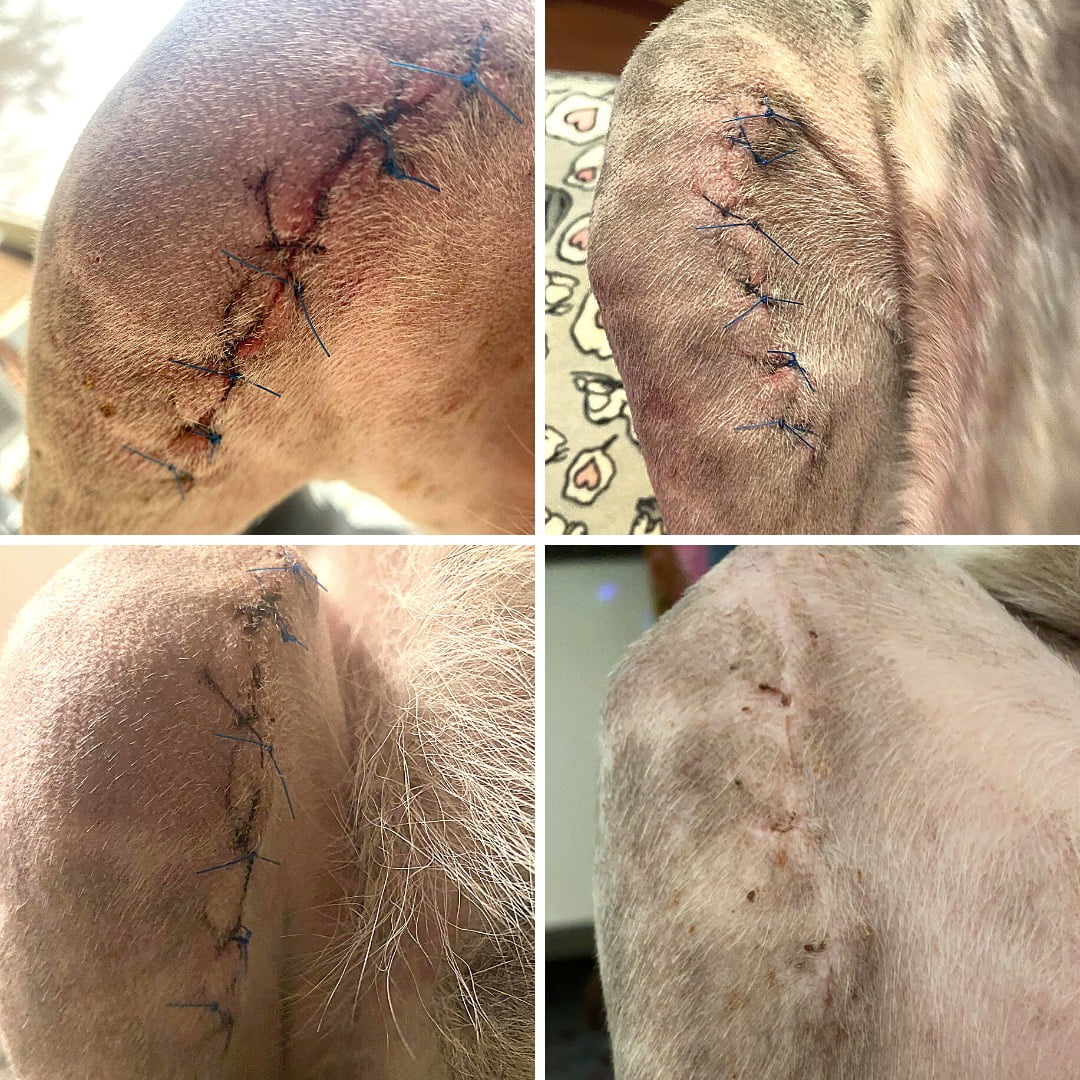Just How Red Light Therapy Can Enhance Your Dog's Overall Health
Red Light Therapy has become an appealing choice for boosting canine wellness. This non-invasive treatment boosts cellular task and promotes recovery in pet dogs struggling with different conditions. Numerous animal owners report recognizable benefits, including pain alleviation and improved mobility. Recognizing the possible applications and hidden mechanisms is essential. What specific problems can it attend to, and exactly how can it be securely integrated into a dog's treatment programs? The answers might amaze you.
Recognizing Red Light Therapy: What It Is and Exactly how It Functions
Red light therapy has obtained popularity in human medicine, its application for pet dogs is significantly recognized for its prospective benefits. This non-invasive therapy uses particular wavelengths of light, normally in the near-infrared and red spectrum, to boost cellular feature. The underlying principle entails the absorption of light by mitochondria, which enhances ATP production and enhances cellular metabolism.
As an outcome, red light therapy promotes boosted blood circulation and aids in tissue repair service. The therapy is delivered via tools such as lasers or LED panels, which can be routed at specific areas of a dog's body. Treatment sessions are generally short, making it a convenient choice for pet dog owners.
Understanding this innovation's systems can help caregivers make notified choices concerning their pet dog's healthcare. As study continues to advance, the passion in red light therapy as a corresponding therapy technique for numerous canine problems is most likely to grow.

Benefits of Red Light Therapy for Dogs
Red light therapy supplies a number of substantial advantages for pet dogs, including effective discomfort alleviation and an accelerated healing procedure. This therapy can enhance movement and adaptability, making it specifically useful for aging or harmed animals. As more pet dog owners seek alternative therapies, understanding these benefits ends up being increasingly vital.
Pain Alleviation Applications
Lots of canine owners are transforming to red light therapy as a promising option for minimizing discomfort in their pets. This non-invasive treatment uses details wavelengths of light to permeate the skin, promoting mobile activity and minimizing swelling. Pets enduring from chronic conditions such as arthritis, hip dysplasia, or post-surgical pain might experience substantial alleviation through this therapy. Research studies suggest that red light therapy can boost blood flow, assisting to provide essential nutrients to affected areas, further contributing to discomfort decrease. Additionally, it might help to reduce the dependence on pharmaceutical pain relievers, which often include unwanted negative effects. Consequently, numerous veterinarians are progressively suggesting red light therapy as a efficient and risk-free alternative for handling pain in canines.

Accelerated Healing Process
The benefits of red light therapy expand past discomfort alleviation, playing a crucial role in accelerating the recovery process for canines. This innovative therapy promotes cellular regrowth, stimulating the production of ATP, which enhances power schedule for recovery cells. Furthermore, red light therapy enhances blood circulation, leading to improved oxygen and nutrient distribution to wounded areas. This enhanced blood circulation not only aids in faster recovery however also lowers inflammation, an usual barrier to recovery. On top of that, the therapy encourages collagen manufacturing, important for tissue repair and regrowth. Generally, by promoting these biological procedures, red light therapy considerably shortens recuperation times, allowing pet dogs to return to their regular activities faster and with higher vitality.
Boosted Movement and Flexibility
Enhanced mobility and adaptability are substantial advantages of red light therapy for dogs, specifically for those experiencing from joint pain or rigidity. This non-invasive treatment makes use of particular wavelengths of light to pass through tissues, promoting increased blood circulation and lowering swelling. Because of this, pets often experience remedy for pain connected with arthritis, hip dysplasia, or post-surgical recuperation. Routine sessions can stimulate mobile fixing and enhance muscular tissue feature, allowing pet dogs to regain their natural variety of motion. Owners have actually reported noticeable renovations in their pet dogs' capability to run, jump, and participate in tasks they once took pleasure in (Red Light Therapy check over here Dogs). Inevitably, red light therapy not just aids reduce pain however likewise contributes to a much more active and satisfying way of life for pet dogs, improving their general high quality of life
Conditions That Can Be Treated With Red Light Therapy
Although red light therapy has acquired popularity in various fields, its application in vet treatment, especially for pet dogs, has actually shown guarantee in treating a series of conditions. This non-invasive therapy approach is thought to assist in reducing pain and swelling connected with joint inflammation, assisting older pet dogs gain back wheelchair. Furthermore, it has been utilized to aid in the recovery of wounds, burns, and surgical incisions, promoting faster recuperation times.
Skin problem, such as dermatitis and locations, might likewise respond favorably to red light therapy, lowering irritability and encouraging healthier fur development. The therapy can be useful for canines suffering from problems like hip dysplasia, tendon injuries, and muscle stress. By boosting mobile repair work and improving blood circulation, red light therapy provides an alternative method to boosting the general wellness of pet dogs, offering relief and promoting a far better quality of life.
The Science Behind Red Light Therapy
Red light therapy runs on the principle of photobiomodulation, which entails the application of particular wavelengths of light to promote mobile processes. These wavelengths, commonly ranging from 600 to 1000 nanometers, pass through the skin and are absorbed by mitochondria, the energy-producing elements of cells. This absorption boosts ATP production, resulting in raised energy availability for mobile features.

Researches suggest that red light therapy might likewise modulate immune reactions and support total mobile health and wellness. By taking advantage of these biological mechanisms, red light therapy offers a non-invasive treatment option that can contribute significantly to a pet's wellness and healing from various problems.
How to Include Red Light Therapy Into Your Dog's Routine
Integrating red light therapy right into a canine's regimen can be a simple process, gave that pet dog proprietors approach it with care and consistency. First, picking an appropriate tool is fundamental, as alternatives variety from portable devices to larger panels. Owners ought to start by presenting the therapy gradually, allowing their canines to adapt to the light exposure. Procedure can be arranged for about 10 to 20 minutes, preferably 2 to 3 times a week, relying on the dog's needs and the advice of a vet
Setting a comfy atmosphere is necessary; making use of a quiet area where the pet feels loosened up can improve the experience. Throughout the sessions, proprietors can engage their pet dogs with calming voices or mild stroking to create a soothing atmosphere. Monitoring the dog's reaction is crucial to ensure the therapy is valuable and pleasurable, inevitably aiding to boost their total health.
Safety Considerations and Measures for Red Light Therapy
When considering red light therapy for dogs, safety should constantly be a leading priority to ensure a positive experience. Pet owners must speak with a veterinarian before starting any type of therapy, especially for dogs with pre-existing conditions or hop over to here those taking medications. It is vital to choose devices specifically developed for pets, as human gadgets might not appropriate.
Appropriate eye security is important; both the canine and the handler must use goggles to secure their eyes click to investigate from possible damage. Furthermore, sessions ought to be kept an eye on carefully to prevent too much exposure. It is a good idea to start with much shorter sessions and progressively boost duration based upon the pet dog's response.
Proprietors ought to additionally observe their family pets for any indicators of discomfort or unfavorable reactions throughout and after treatment. By adhering to these security considerations, red light therapy can be a beneficial and secure choice for improving a canine's health.
Often Asked Concerns
Just how Commonly Should I Use Red Light Therapy on My Dog?

Can Red Light Therapy Change Typical Vet Therapies?
Red light therapy need to not change typical vet therapies. While it may complement therapies by promoting recovery and reducing pain, speaking with a veterinarian remains vital for thorough care and dealing with hidden health and wellness problems in canines.
Are There Any Negative Effects of Red Light Therapy for Dogs?
Red light therapy for pets generally has marginal adverse effects, such as short-lived skin soreness or warmth at the treatment website. The majority of pet dogs endure the therapy well, however checking for any type of unusual responses is suggested.
What Is the Suitable Duration for each and every Red Light Therapy Session?
The ideal duration for each and every red light therapy session normally ranges from 10 to 20 minutes, relying on the pet dog's particular needs and problem. Appointment with a vet is suggested to customize the therapy properly.
Is Red Light Therapy Ideal for All Pet Breeds?
Red light therapy is usually ideal for a lot of pet dog breeds. Private health problems and level of sensitivities may influence its applicability. Consulting a veterinarian assures the therapy is useful and safe for each particular dog.
Numerous pet owners are transforming to red light therapy as a promising option for reducing discomfort in their family pets. Enhanced flexibility and flexibility are considerable advantages of red light therapy for canines, especially for those enduring from joint pain or tightness. Red light therapy operates on the principle of photobiomodulation, which entails the application of particular wavelengths of light to boost mobile procedures. Research study indicates that red light therapy can promote recovery, lower inflammation, and minimize discomfort in dogs. Red light therapy for dogs normally has very little side results, such as short-term skin inflammation or heat at the therapy website.